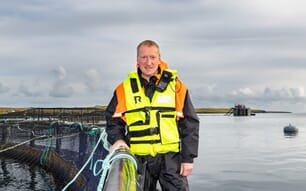“Going forward, we need to make the point that proper utilisation of fishery resources is not about increasing production or increasing catches, it is more about maximising value of what we are now taking and realizing the significant benefits that is possible by focusing on value addition,” said Milton Haughton, Executive Director of the CRFM.
Chief Fisheries Officers, Senior Fisheries Officers and private sector representatives from 17 CRFM Member States learned about the application of the value chain approach to the fisheries and aquaculture sector when they attended a workshop held in Suriname, reports TheBahamasWeekly.
“The objective was really to introduce participants to the value chain approach in fisheries, and we did this in collaboration with development partners from Iceland and the Faculty of Food and Agriculture at the University of the West Indies,” Mr Haughton said.
“Iceland has made tremendous advances in value addition in fishers and they are perhaps the world’s leaders,” the CRFM Executive Director said.
This success did not happen overnight—it arose out of a period of crisis, when the country was experiencing a decline in its fisheries after the 1960s. However, Mr Haughton said, they were able to turn things around largely by applying the value chain approach to make better use of their resources—such as improving quality, making beauty products from fish guts and adopting a market-driven approach to fisheries. The Icelandic economy with a per capita GDP of about US$45,000, is driven largely by the fisheries sector.
“They are no longer going out to catch as much fish as they can, but they are trying to optimize the value, and satisfy the requirement of their markets,” Mr Haughton explained.
Applying the value chain approach begins with the simple things, starting with preparatory activities before the fishers go to sea, and then extending to harvesting, handling, processing, marketing and distribution.
“We can catch fish in such a way that we maximize value just by targeting ‘when, where, what size, etc.’ we catch based on market demand. Just by doing that you can improve value... In some cases, it’s just about maintaining the freshness and quality by improving the handling of the product,” the CRFM Executive Director explained.
Meeting market demand
Mr Haughton explained why understanding market demand is key for producers hoping to corner the market to maximize local gains.
“Think more about the consumer: What is it that the consumer really wants? What is it that the consumer will pay more money for? There would be a major change overall in the way fishers and processors conduct their operations if they were to focus more on the consumers,” he commented.
Innovative products from fish
Mr Haughton explained that a lot of the non-target species or by-catch is discarded, since it is deemed to have low market value. However, using science, technology and good marketing these can be converted into useful products.
“I was in El Salvador recently and I was surprised to see that they were making cookies and meals for children from flour [derived] from fish that would normally be discarded,” Mr Haughton revealed.
In other places, fish guts are used to make cosmetics and pharmaceuticals-very high end products-and increasingly, companies are using fish enzymes to make creams and lotions.
“We have a long way to go but we have identified some potential fisheries and potential resources where we could begin to apply this approach,” Mr Haughton said.
Fish leather from fish skin, beauty products from fish guts, and health supplements from fish oils.




